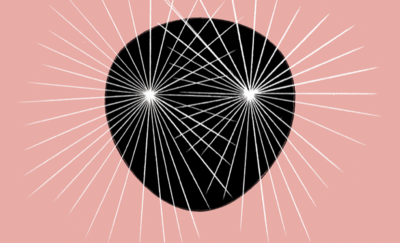Welcome at the Interface Culture program website.
Acting as creative artists and researchers, students learn how to advance the state of the art of current interface technologies and applications. Through interdisciplinary research and team work, they also develop new aspects of interface design including its cultural and social applications. The themes elaborated under the Master's programme in relation to interactive technologies include Interactive Environments, Interactive Art, Ubiquitous Computing, game design, VR and MR environments, Sound Art, Media Art, Web-Art, Software Art, HCI research and interaction design.

The Interface Culture program at the Linz University of Arts Department of Media was founded in 2004 by Christa Sommerer and Laurent Mignonneau. The program teaches students of human-machine interaction to develop innovative interfaces that harness new interface technologies at the confluence of art, research, application and design, and to investigate the cultural and social possibilities of implementing them.
The term "interface" is omnipresent nowadays. Basically, it describes an intersection or linkage between different computer systems that makes use of hardware components and software programs to enable the exchange and transmission of digital information via communications protocols.
However, an interface also describes the hook-up between human and machine, whereby the human qua user undertakes interaction as a means of operating and influencing the software and hardware components of a digital system. An interface thus enables human beings to communicate with digital technologies as well as to generate, receive and exchange data. Examples of interfaces in very widespread use are the mouse-keyboard interface and graphical user interfaces (i.e. desktop metaphors). In recent years, though, we have witnessed rapid developments in the direction of more intuitive and more seamless interface designs; the fields of research that have emerged include ubiquitous computing, intelligent environments, tangible user interfaces, auditory interfaces, VR-based and MR-based interaction, multi-modal interaction (camera-based interaction, voice-driven interaction, gesture-based interaction), robotic interfaces, natural interfaces and artistic and metaphoric interfaces.
Artists in the field of interactive art have been conducting research on human-machine interaction for a number of years now. By means of artistic, intuitive, conceptual, social and critical forms of interaction design, they have shown how digital processes can become essential elements of the artistic process.
Ars Electronica and in particular the Prix Ars Electronica's Interactive Art category launched in 1991 has had a powerful impact on this dialog and played an active role in promoting ongoing development in this field of research.
The Interface Cultures program is based upon this know-how. It is an artistic-scientific course of study to give budding media artists and media theoreticians solid training in creative and innovative interface design. Artistic design in these areas includes interactive art, netart, software art, robotic art, soundart, noiseart, games & storytelling and mobile art, as well as new hybrid fields like genetic art, bioart, spaceart and nanoart.
It is precisely this combination of technical know-how, interdisciplinary research and a creative artistic-scientific approach to a task that makes it possible to develop new, creative interfaces that engender progressive and innovative artistic-creative applications for media art, media design, media research and communication.
All the Rage. The Challenges of Female Anger
2. bis 4. April 2025 ifk Arkade & ifk@Zoom
Das ifk lädt zur Tagung
Everyone seems to be angry these days, but female anger in particular is surfacing in unprecedented forms and shades. Numerous examples from politics, theory, art, and literature speak to the proliferation of female rage, from Greta Thunberg’s »How dare you!« and the resentment voiced by the BLM co-founders to countless new literary and academic titles. Writers like Leslie Jamison, Brittney Cooper, and Soraya Chemaly follow in the footsteps of Audre Lorde‘s The Uses of Anger (1981), (re)claiming and embracing an emotion long denied to women. In fictional works such as Fatma Aydemir's Ellbogen (2017) or Virginie Despentes’ Cher connard (2022), however, the ambivalences of this self-empowering feeling also become evident. The social and political sciences, for example, have recently started to look closely at the role of women’s anger in right-wing milieus, which has long been considered male-dominated.
One of the challenges of anger is that it is essentially selfjustifying: Figures of all political stripes insist on the legitimacy of their feelings, their right to be heard. How can (queer-)feminist theory contend with the explosive contradictions, the fraught aptness of anger? What would a conception of female anger look like that takes seriously the pitfalls, intersections, and double binds at its base? What would a history of female anger entail? Is there a framework that allows us to navigate the line between the use and abuse of anger? Together with scholars, activists, artists, and writers, we want to explore the complexities and ambiguities of this emotion at a time when female anger is all the rage.
Concept: Julia Boog-Kaminski (ifk Vienna), Alexander Draxl (Vienna)
Participants: Fatma Aydemir (Journalist, Author), Déborah Brosteaux (Centre Marc Bloch, Berlin / Université Libre de Bruxelles), Iris Därmann (Humboldt-Universität zu Berlin), Lisa Downing (University of Birmingham), Lena Ekelund (Hamburg), Ute Frevert (Max-Planck-Institut für Bildungsforschung Berlin), Julia Freytag (Hamburg), Esther Lehnert (Alice Salomon Hochschule Berlin), Marina Rauchenbacher (Universität für Musik und darstellende Kunst Wien), Marlene Streeruwitz (Author), Paige Sweet (Manhattan Institute for Psychoanalysis), Fiona Wachberger (ifk Vienna)
